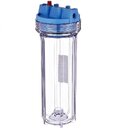Hi,
I am looking for building a Transparent Pressurize cylinder to withstand a pressure of 300 psi. I am bit confused of Using either Poly carbonate or Acrylic as the material. Can anyone help me on this.
I am looking for building a Transparent Pressurize cylinder to withstand a pressure of 300 psi. I am bit confused of Using either Poly carbonate or Acrylic as the material. Can anyone help me on this.





